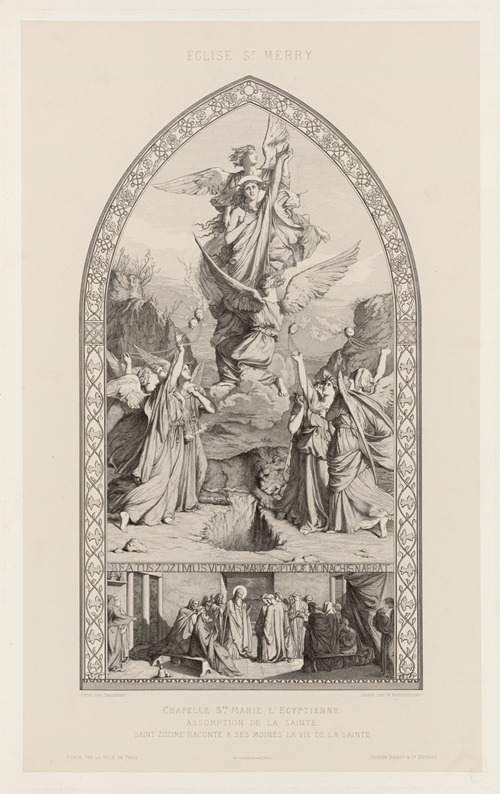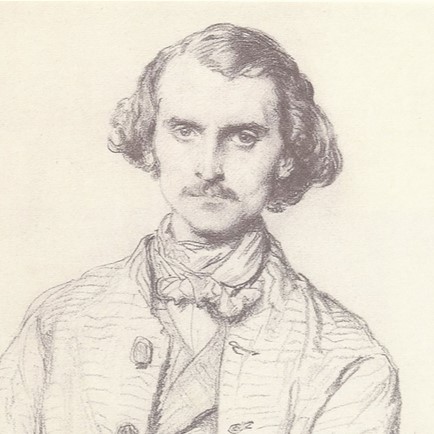




William Haussoullier was a French painter and engraver specializing in religious and genre scenes.
Born in Paris (formerly in the 3rd arrondissement), Guillaume Haussoullier (sometimes written “Haussoulier”) took the first name William, perhaps due to his English ancestry on his mother's side, Lucy Sisson. He was admitted to the École des Beaux-Arts and became a student, then assistant, to Paul Delaroche. His first work presented at the Paris Salon dates back to 1838, a painting entitled Agar in the Desert, undoubtedly a biblical theme imposed as part of his studies; his address is listed as 26 rue Meslay. Haussoullier returned to the Salon in 1840, 1841, and 1845.
Haussoullier seems to have had family roots in England, was related to the Payton family, and had an art dealer in London, where The Fountain of Youth was quickly sold. By 1844, it was already on display at the Royal Academy. It was this detail that intrigued Graham Reynolds. Among other things, he revealed that Haussoullier was friends with Théodore Chassériau, who drew his portrait in pencil in 1850. The painter also frequented Eugénie de Guérin, who, after 1839, wrote to her friend Jules Barbey d'Aurevilly to recommend Haussoullier; the latter painted a portrait of the writer in bohemian style.
After these early beginnings, Haussoullier received commissions from the imperial fine arts administration in Paris in 1853-1854 for official portraits and religious scenes for churches. However, a turning point came after 1865. Since 1845, Haussoullier had exhibited regularly at the Salon des Peintures Religieuses. From 1867 onwards, on the advice of Léopold Flameng, he began to exhibit engravings. He continued to produce and exhibit them until the Salon des Artistes Français in 1892. Most of these were interpretative etchings based on the great masters of the Italian Renaissance, which the expert Henri Beraldi considered to be of high quality. Some of his etchings were reproduced in the Gazette des beaux-arts.
He became a member of the Société des artistes français and died on March 27, 1892, at his home at 61 boulevard Suchet in the 16th arrondissement of Paris, a few days before the opening of the Salon. He is buried in the Auteuil Cemetery (9th division).
His stepson was the artist William Julian-Damazy, a child his wife had had from a previous marriage.


